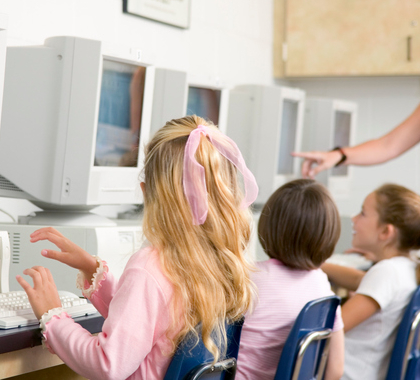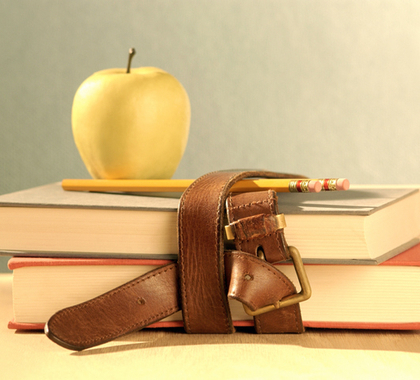The Diocese of Marquette in Michigan is in the process of adopting a Catholic liberal arts curriculum for all of its schools, instead of using the Common Core State Standards.
A spokesman for the diocese says the program has experienced early success.
Common Core is a set of federal standards dictating what students should know at the end of each grade level. As of 2011, 46 states and Washington, DC had adopted the standards. Since then, three states have officially repealed the standards, and of 45 the states that joined the Common Core Consortia, an association that provides states with Common Core-aligned exams, 25 have dropped out. Two bills to replace Common Core in Michigan are progressing through the state’s legislature.
The Diocese of Marquette, which operates 10 schools in Michigan’s Upper Peninsula, previously had no set curriculum. Marquette Bishop John Doerfler said in a statement in June, “After much consideration, the Catholic schools in the Diocese of Marquette will not adapt or adopt the Common Core State Standards which were developed for the public school system. That said, we acknowledge that there is a base of adequate secular material in the Common Core State Standards that faith-based schools could reference as part of their educational programming. While we respectfully understand that other private and Catholic schools may discern to adapt or adopt the standards for these and other reasons, we do not believe that such actions would benefit the mission, Catholic identity or academic excellence of our schools.”
Adoption of the new curriculum is still in process. In April, Marquette Superintendent of Schools Mark Salisbury told the Cardinal Newman Society, an organization that promotes Catholic education, the diocese was “enthusiastic about our early successes.”
Following Others’ Success
Zach Good—provost at Sacred Heart Academy, a classical Catholic school in Grand Rapids, Michigan—worked with Marquette Diocese personnel on the transition to a new curriculum, providing teacher training and expertise.
“I started talking with Mark Salisbury in 2014,” Good said. “Sacred Heart had undergone a similar transition on the school level, but we were just finishing up our first year of a complete changeover to the classical curriculum. Sacred Heart had around 60 students, and the number was declining significantly every year. There had been permission to close the school from the bishop. Financially, that would have been the wisest thing to do, but the parish priest suggested a radical re-founding of the school with a Catholic curriculum. We just finished up our third year as a classical academy, and when we open in the fall, we will have 300 students.”
Avoiding Common Core Shortcomings
Dan Guernsey, the Cardinal Newman Society’s director of K–12 programs, says Common Core fails to provide a well-rounded education.
“Catholic schools can use parts of the Common Core, but the Common Core in and of itself is insufficient to guide education in Catholic schools,” Guernsey said. “The Common Core does college/career prep. We adopt this broader approach and vision toward education, and parents will run to that. Parents will pay, if they can afford it, to get an uncommon education and have their children’s depth of thought, compassion, humanity, and vision of man articulated. In the Common Core, we’ve lost this vision of humanity.”
Craving the Classics
Guernsey says parents and students are attracted to classical teaching.
“I think there’s a market for classical [education], because there’s an elite, unique, attractive element to it,” Guernsey said. “The liberal arts understanding, which animates classical schools and schools that are like classical schools, is that knowledge is pursued for its own sake, and the function of the schools is to develop a fully functioning, flourishing human person.”
Andrew Seeley, executive director of the Institute for Catholic Liberal Education (ICLE), says the Catholic tradition has a history of success.
“Catholic educators by and large, through no fault of their own, have almost no familiarity with the Catholic traditions of education,” Seeley said. “The Catholic classical schools are deliberately immersing themselves in the Catholic tradition of education. The Catholic Church has much more experience in educating successfully than any contemporary education proposal out there.”
Success of the Classics
Between 120 and 130 Catholic liberal arts schools currently operate nationwide, and Seeley says that number is growing.
“Since 2010, we’ve seen an enormous increase in the number of schools that are diocesan or parochial that either have converted [to a classical Catholic school] or are seriously interested,” Seeley said. “This year—since January—has been incredibly busy in terms of [ICLE] trying to handle the interest in it.”
Some Catholic classical schools are noting great academic success, too, Good says. At Sacred Heart, students take a diocesan-required Measures of Academic Progress test annually. For the past three years, the school has appeared frequently near the top of diocesan lists for student improvement at a number of grade levels. Two Sacred Heart 9th graders scored high enough on the PSAT 8/9 this year to indicate a strong chance of qualifying for the National Merit Scholarship Program when they are next tested. Two students also received perfect scores on the National Latin Exam this year.
Valuing Parents
Good says the classical tradition is flourishing because it values parents’ role in their children’s education.
“A lot of our influx of new students has been from families who are homeschooling, who left schools where Common Core or [too much] technology are used,” Good said. “Nationally, parochial [enrollment] continues to decline, and homeschooling tends to grow dramatically. The big difference is a grounding in the idea that the parents are the primary educators of their children.”
Ashley Bateman ([email protected]) writes from Alexandria, Virginia.




